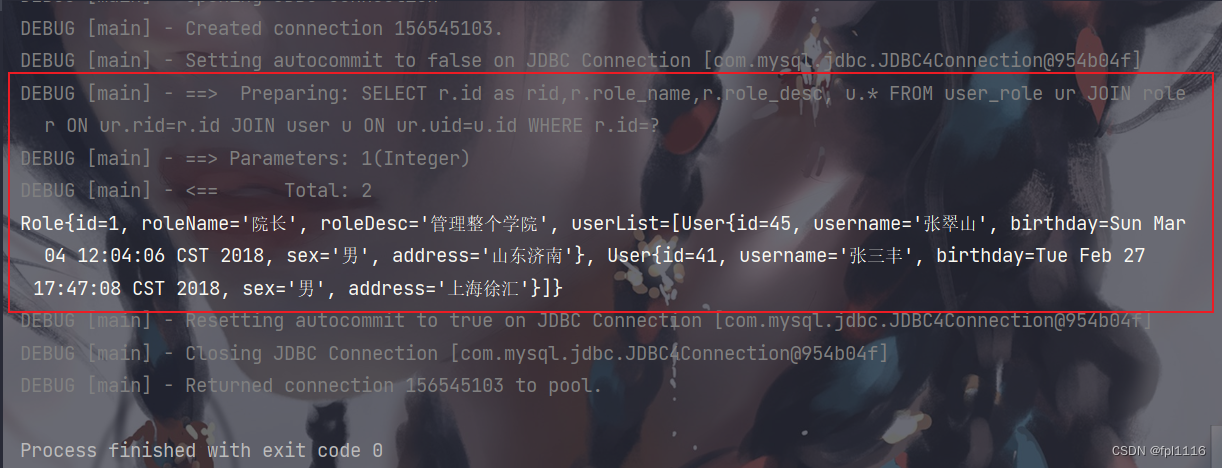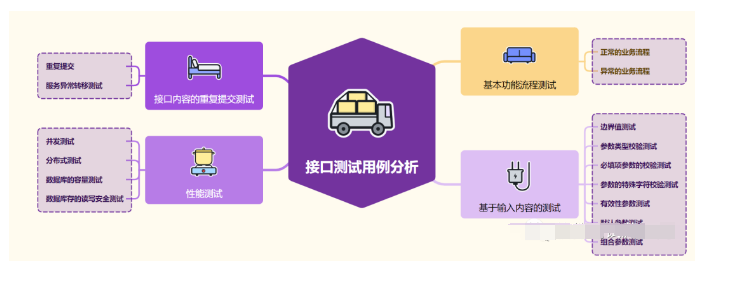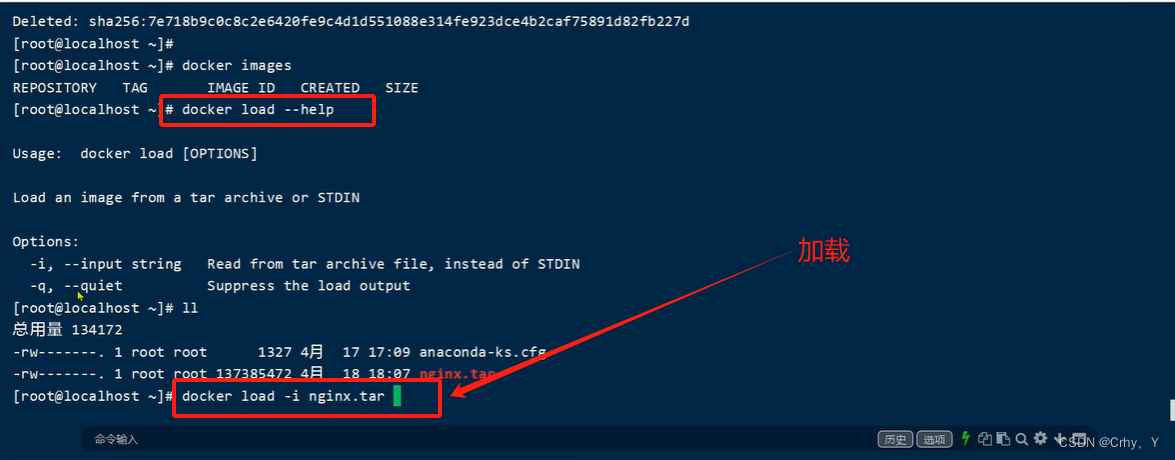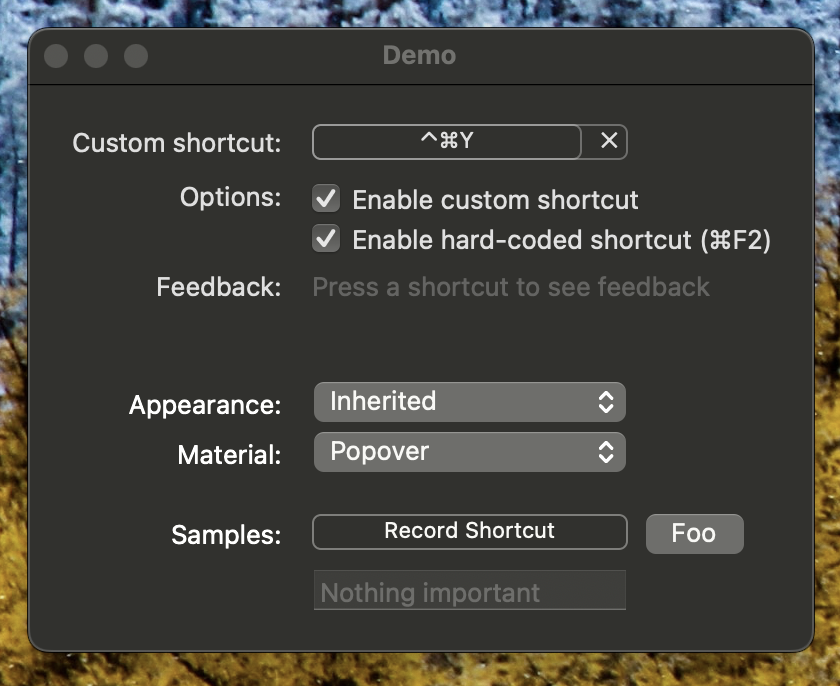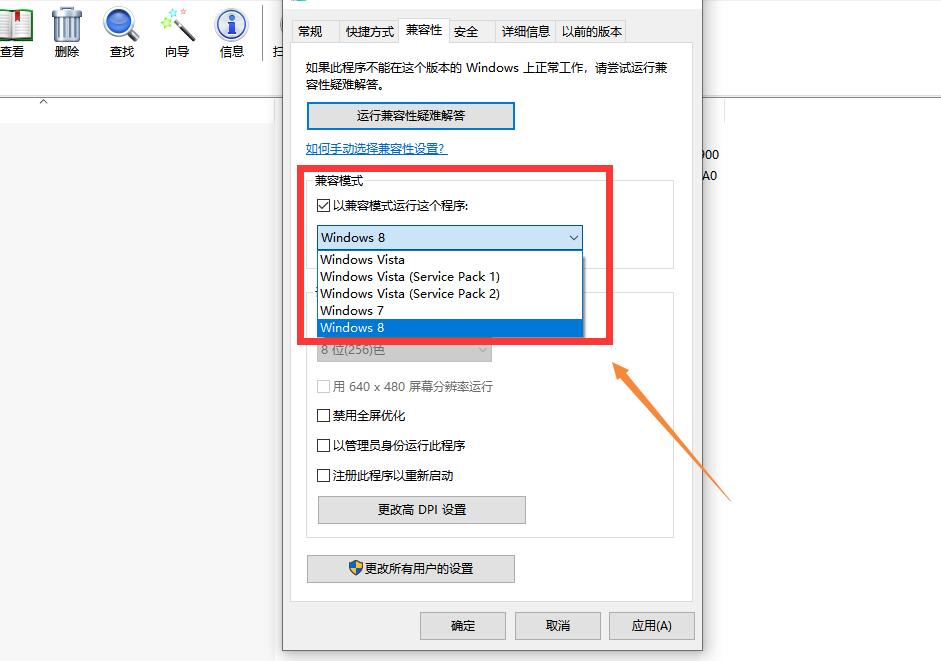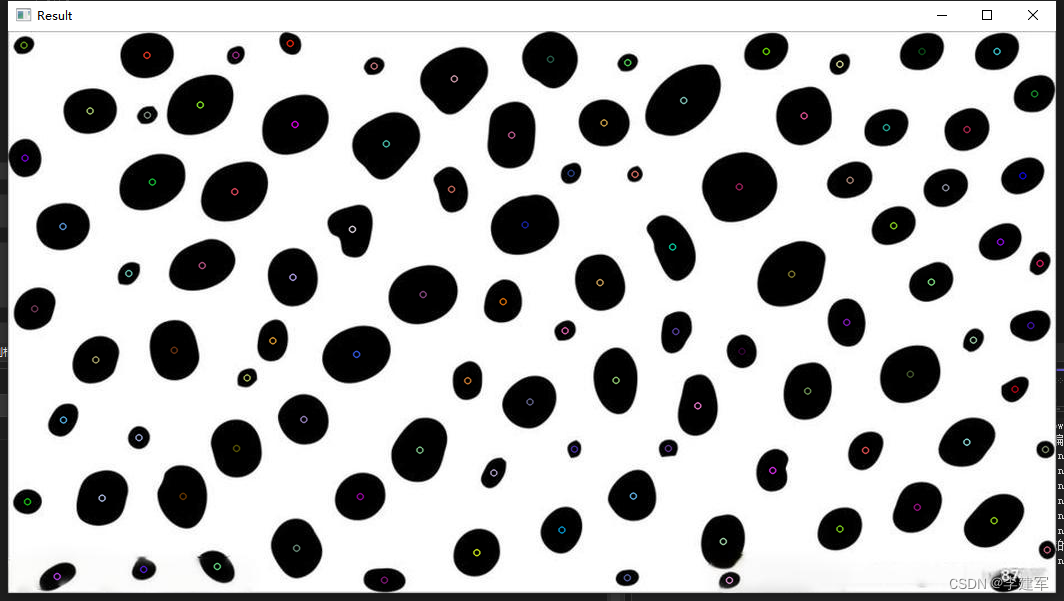本文主要探讨linux系统进程和系统相关知识,本博客其他博文对该文章的部分内容有详细介绍
main函数
int main(int argc,char *argv[],char *envp[]);
操作系统下main执行前先执行引导代码,编译连接引导代码和程序连接在一起构成可执行程序,加载器将程序加载到内存中执行
程序终止(return、exit、_exit、atexit)
int atexit(void (*function)(void));
atexit注册进程终止处理函数,可注册多个进程终止处理函数,先执行注册函数后终止
return、exit、_exit:return和exit会执行进程终止处理函数,_exit不执行
环境变量
extern char **environ;
char *getenv(const char *name);
进程有环境变量构成环境变量表(字符串数组),通过environ全局变量使用环境变量,获取指定环境变量函数getenv
进程(详见本博客其他文章)
进程是程序运行一次的过程,进程控制块PCB是内核管理进程的数据结构
进程ID可用getpid、getppid、getuid、geteuid、getgid、getegid函数获取
进程独立运行在虚拟地址空,逻辑地址空间均为4GB(32位),0-1G为OS,1-4G为应用程序
虚拟地址到物理地址空间的映实现进程隔离,多进程同时运行
运行进程宏观上并行,微观上串行
操作系统最小调度单元是线程
进程状态:就绪态,运行态,阻塞态
fork与vfork(详见本博客其他文章)
子进程和父进程有独立PCB(复制父进程)
fork父子进程执行次序不定,vfork子进程先运行,子进程调用exec/exit后,父进程执行,子进程未调用exec/exit,程序出错
fork子进程拷贝父进程地址空间,vfork子进程共享父进程地址空间
进程资源(详见本博客其他文章)
进程运行需消耗系统资源(内存、IO),进程消亡未释放资源则资源丢失,进程退出,操作系统会回收资源
操作系统回收进程工作消耗的内存和IO,父进程回收进程本身占用的内存(8KB,task_struct和栈)
僵尸进程是子进程先于父进程结束,父进程为回收资源造成,从而造成内存泄漏
父进程使wait/waitpid显示回收子进程资源并获取子进程退出状态
孤儿进程是父进程先于子进程结束,子进程由init进程接收
wait/waitpid(详见本博客其他文章)
父进程调用wait函数阻塞,子进程结束,系统向其父进程发送SIGCHILD信号,父进程被SIGCHILD信号唤醒后去回收子进程
pid_t wait(int *status);
pid_t waitpid(pid_t pid, int *status, int options);
int waitid(idtype_t idtype, id_t id, siginfo_t *infop, int options);
WIFEXITED(status)宏判断子进程是否正常终止(return、exit、_exit)
WIFSIGNALED(status)宏判断子进程是否非正常终止(被信号终止)
WEXITSTATUS(status)宏得到正常终止进程返回值
waitpid回收指定PID子进程,有阻塞或非阻塞
ret = waitpid(-1, &status, 0); == ret =wait(&status);
-1任意子进程,0阻塞式(默认),ret子进程PIDret = waitpid(pid, &status, WNOHANG);
非阻塞式回收子进程,子进程已结束回收成功,返回的子PID,子进程未结束则父进程返回0exec族函数(详见本博客其他文章)
int execl(const char *path, const char *arg, ...);
int execlp(const char *file, const char *arg, ...);
int execle(const char *path, const char *arg,.., char * const envp[]);
int execv(const char *path, char *const argv[]);
int execvp(const char *file, char *const argv[]);
int execvpe(const char *file, char *const argv[],char *const envp[]);
path:程序路径,file:程序名arg:程序名,argv[]:程序名称+参数,envp新环境变量代替调用进程的环境变量,其余为命令参数,且以NULL结尾
守护进程(详见本博客其他文章)
进程组由多个进程构成,会话由进程组构成
特点:生存周期长,随操作系统启动和关闭,可脱离控制台运行
syslogd负责日志文件写入和维护
syslog记录系统调试信息,/var/log/messages中存储(ubuntu中在/var/log/syslog)守护进程
proc目录下文件大小是0,文件不在硬盘中,不是真实文件是接口,是映射内核内部数据结构被格式化成字符的结果
sys是虚拟文件,proc文件只读,/sys文件可读写
进程间通信(详见本博客其他文章)
方式:无名管道和有名管道、信号量、消息队列、共享内存、Socket套接字、信号
无名管道:内核维护内存,有读端和写端(单向通信的),父子进程间通信
有名管道:内核维护内存,表现为有名字文件,半双工,任意2进程通信
消息队列:类似内核维护的FIFO,全双工
信号量:用于解决进程同步访问数据
共享内存:进程间通过大块内存共享数据
信号:系统向进程发送信号(指令kill)
socket:通过TCP/IP等协议共享数据
系统时间
定时器(timer)用于段时间计时,实时时钟(RTC)用于点时间计时
jiffies是linux内核中的全局变量,记录内核节拍数(1节拍为1-10ms,可设置)
linux系统记录时间:内核开机启动读取RTC硬件获取初始基准时间,存储该基准时间对应jiffies值,系统运行每节拍,jiffies加1,根据jiffies加UTC(1970-01-01 00:00:00 +0000)可获得时间点,RTC在关机后记录节拍,用于开机后的点时间准确
时间函数
time_t time(time_t *t);
返回当前时间距UTC秒数(使用jiffies)
char *ctime(const time_t *timep);
char *ctime_r(const time_t *timep, char *buf);
将time返回的秒数转成字符串时间
struct tm *gmtime(const time_t *timep);
struct tm *gmtime_r(const time_t *timep, struct tm *result);
struct tm *localtime(const time_t *timep);
struct tm *localtime_r(const time_t *timep, struct tm *result);struct tm {
int tm_sec; /* seconds */
int tm_min; /* minutes */
int tm_hour; /* hours */
int tm_mday; /* day of the month */
int tm_mon; /* month */
int tm_year; /* year */
int tm_wday; /* day of the week */
int tm_yday; /* day in the year */
int tm_isdst; /* daylight saving time */
};gmtime/localtime将time秒数转成struct tm结构时间,gmtime是国际时间,localtime是本地时间(系统时区时间)
time_t mktime(struct tm *tm);
mktime将struct tm转成time_t
char *asctime(const struct tm *timeptr);
size_t strftime(char *str, size_t maxsize, const char *format, const struct tm *timeptr);
asctime/strftime将struct tm转成字符串时间,strftime可指定格式
int gettimeofday(struct timeval *tv, struct timezone *tz);
int settimeofday(const struct timeval *tv, const struct timezone *tz);
struct timeval {
time_t tv_sec; /* seconds */
suseconds_t tv_usec; /* microseconds */
};
struct timezone {
int tz_minuteswest; /* minutes west of Greenwich */
int tz_dsttime; /* type of DST correction */
};
gettimeofday
返回时间由struct timeval和struct timezone结构体表示,timeval表示时间,timezone表示时区
settimeofday设置当前时间和时区
time产生随机数
int rand(void);
int rand_r(unsigned int *seedp);
void srand(unsigned int seed);
srand设置不同种子,调用rand获取随机序列,常用time函数返回值做种子
demo1:
环境变量(main,environ)
#include <stdio.h>
void printf_error()
{
printf("uasge: ./a.out xxx \n");
}
int main(char argc,char *argv[],char *envp[])
{
int i = 0;
int j = 0;
extern char **environ;
if(argc != 2)
{
atexit(printf_error);
return 0;
}
printf("argv:%s\n",argv[1]);
while(envp[i] != NULL)
{
printf("%s\n",envp[i]);
i++;
}
while (environ[j] != NULL)
{
printf("%s\n", environ[j]);
j++;
}
return 0;
}
结果显示:
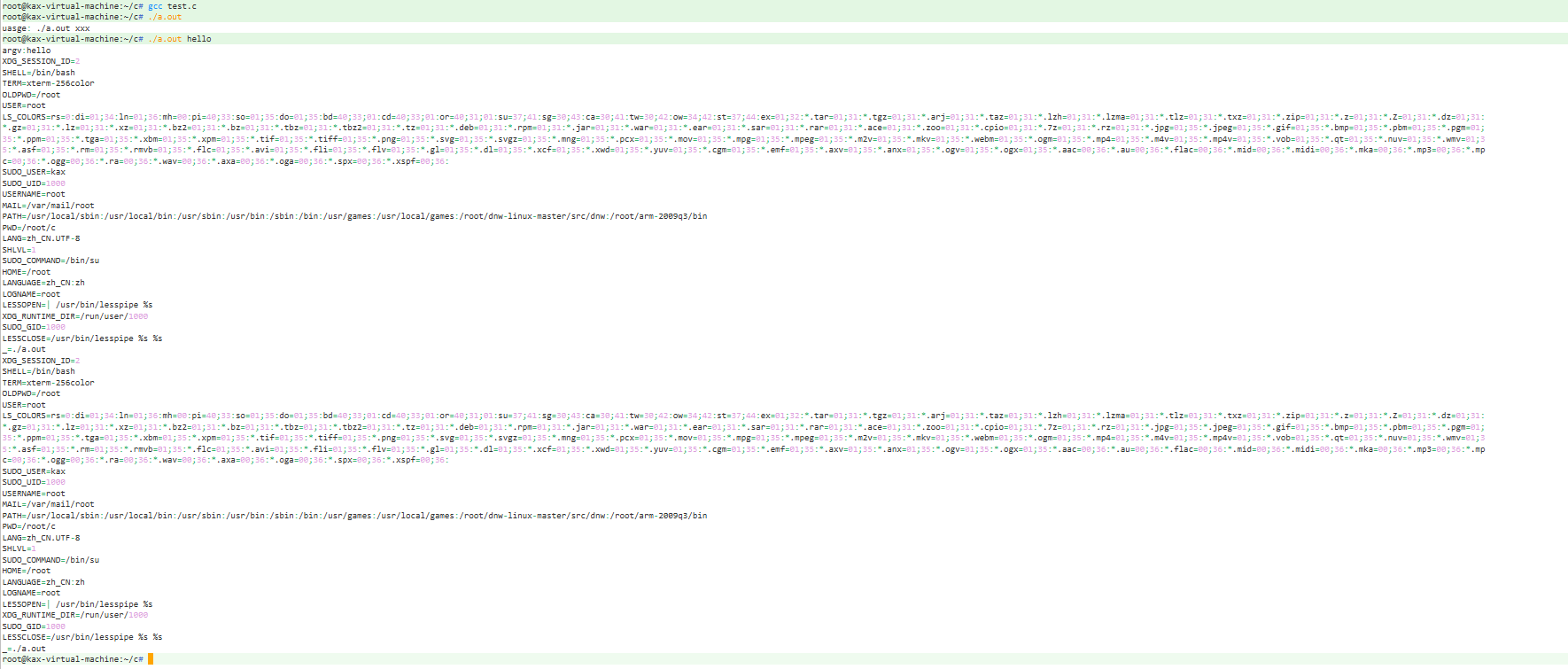
demo2:
fork前为父进程空间,子进程继承父进程的资源(fork前),pid=0为子进程空间,pid>0为父进程空间,其余为公共空间,子进程继承父进程fd(覆盖写),父子有独立的pcb
#include <stdio.h>
#include <unistd.h>
#include <stdio.h>
#include <sys/types.h>
#include <sys/stat.h>
#include <fcntl.h>
int main()
{
pid_t pid;
int fd;
int num = 0;
printf("befor fork pid : %d\n",getpid());
pid = fork();
fd = open("test",O_RDWR);
if(pid == 0)
{
num++;
write(fd,"cd",2);
printf("son : %d num : %d\n",getpid(),num);
}
else if(pid > 0)
{
num++;
printf("father : %d num: %d\n",getpid(),num);
write(fd,"ab",2);
}
else
{
perror("fork");
}
close(fd);
printf("the last pid : %d num : %d\n",getpid(),num);
return 0;
}结果显示:

demo3:
wait/waitpid:非阻塞式回收子进程,子进程已结束回收成功,返回的子PID,子进程未结束则父进程返回0
#include <stdio.h>
#include <unistd.h>
#include <sys/types.h>
#include <sys/wait.h>
#include <stdlib.h>
int main(void)
{
pid_t pid;
pid_t ret;
int status;
pid = fork();
if (pid > 0)
{
printf("father pid : %d.\n",getpid());
//ret = wait(&status);
//ret = waitpid(-1, &status, 0);
//ret = waitpid(pid, &status, 0);
ret = waitpid(pid, &status, WNOHANG); // 非阻塞式
printf("son pid : %d.\n", ret);
printf("son normal exit status :%d\n", WIFEXITED(status));
printf("son abnormal exit status :%d\n", WIFSIGNALED(status));
printf("son ret : %d.\n", WEXITSTATUS(status));
}
else if (pid == 0)
{
return 27;
}
else
{
perror("fork");
return -1;
}
return 0;
}结果显示:

demo4:
execl族函数
#include <stdio.h>
#include <stdlib.h>
#include <unistd.h>
int main()
{
pid_t pid;
pid = fork();
if (pid > 0)
{
printf("father pid :%d.\n", getpid());
}
else if (pid == 0)
{
//execl("/bin/ls", "ls", "-l", NULL);
//char * const arg[] = {"ls", "-l", "-a", NULL};
//execv("/bin/ls", arg);
//execlp("ls", "ls", "-l", NULL);
char * const envp[] = {"num = 27", NULL};
execle("/bin/ls","ls","-l", NULL, envp);
return 0;
}
else
{
perror("fork");
return -1;
}
return 0;
}结果显示:

demo5:
守护进程
#include <stdio.h>
#include <unistd.h>
#include <stdlib.h>
#include <sys/types.h>
#include <sys/stat.h>
#include <fcntl.h>
void create_daemon(void)
{
pid_t pid;
int i = 0;
int num = sysconf(_SC_OPEN_MAX);
pid = fork();
if (pid < 0)
{
perror("fork");
exit(-1);
}
if (pid > 0)
{
exit(0);
}
pid = setsid();
if (pid < 0)
{
perror("setsid");
exit(-1);
}
chdir("/");
umask(0);
for (i=0; i<num; i++)
{
close(i);
}
open("/dev/null", O_RDWR);
open("/dev/null", O_RDWR);
open("/dev/null", O_RDWR);
}
void test_process()
{
int fd;
fd = open("lock", O_RDWR | O_TRUNC | O_CREAT | O_EXCL, 0664);
if(fd < 0)
{
printf("./a.out is running\n");
exit(-1);
}
}
int main(void)
{
test_process();
create_daemon();
while (1)
{
printf("hello word\n");
sleep(1);
}
return 0;
}结果显示:

syslog
#include <syslog.h>
void openlog(const char *ident, int option, int facility);
void syslog(int priority, const char *format, ...);
void closelog(void);

demo6:
系统时间函数
#include <stdio.h>
#include <time.h>
#include <string.h>
#include <sys/time.h>
int main()
{
time_t ts;
time_t mk;
struct tm dt;
int ret = -1;
char buf[100];
struct timeval tv = {0};
struct timezone tz = {0};
time(&ts);
if (ts < 0)
{
perror("time");
return -1;
}
printf("time : %ld\n",ts);
// ctime
printf("ctime: %s\n", ctime(&ts));
// gmtime/localtime
memset(&dt, 0, sizeof(dt));
gmtime_r(&ts, &dt);
printf("gmtime: %d-%d-%d %d:%d:%d\n", dt.tm_year+1900, dt.tm_mon+1, dt.tm_mday,dt.tm_hour,dt.tm_min,dt.tm_sec);
memset(&dt, 0, sizeof(dt));
localtime_r(&ts, &dt);
printf("loacaltime : %d-%d-%d %d:%d:%d\n", dt.tm_year+1900, dt.tm_mon+1, dt.tm_mday,dt.tm_hour,dt.tm_min,dt.tm_sec);
//mktime
mk = mktime(&dt);
printf("mktime : %ld\n",mk);
// asctime
printf("asctime:%s\n", asctime(&dt));
// strftime
memset(buf, 0, sizeof(buf));
strftime(buf, sizeof(buf), "%Y-%m-%d %H-%M-%S", &dt);
printf("strftime : %s\n", buf);
// gettimeofday
ret = gettimeofday(&tv, &tz);
if (ret < 0)
{
perror("gettimeofday");
return -1;
}
printf("sec: %ld\n", tv.tv_sec);
printf("timezone:%d\n", tz.tz_minuteswest);
return 0;
}结果显示:

time做随机数种子
#include <stdio.h>
#include <stdlib.h>
#include <time.h>
int main()
{
int i = 0;
while(i < 5)
{
srand(time(NULL));
printf("%d ",rand());
i++;
}
printf("\n");
return 0;
}结果显示:

